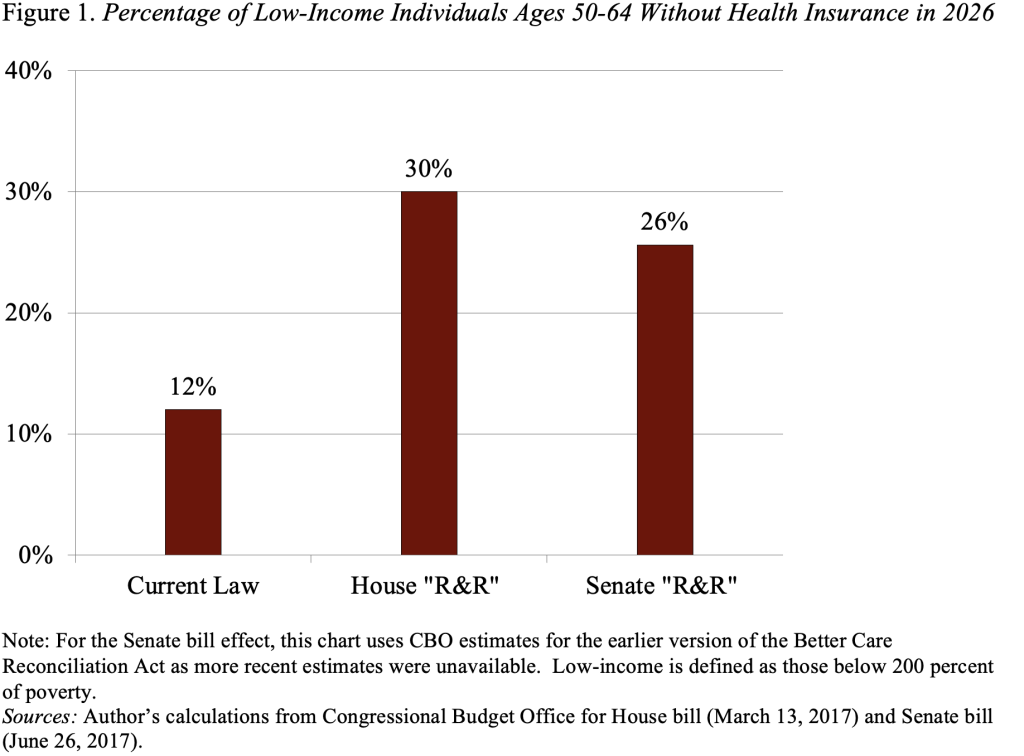“Repeal & Replace” Would Sharply Raise Health Insurance Costs for 50+
Alicia H. Munnell is a columnist for MarketWatch and senior advisor of the Center for Retirement Research at Boston College.
Many are expected to end up uninsured.
Who knows what is going on with health care legislation? But I am still interested in how any potential changes could affect older workers.
The need for medical care rises sharply after age 50. Obamacare – the Affordable Care Act of 2010 – increased the coverage of these older adults by expanding Medicaid, restructuring the insurance market, and offering subsides. The “Repeal & Replace” legislation proposed by Congress would largely reverse many of these changes.
“Repeal” the Medicaid expansion
Medicaid traditionally covered low-income children, the disabled, and the elderly, and largely excluded working-age adults.
Obamacare now allows states to enroll working-age adults with incomes at 138 percent of the federal poverty level ($16,600 for an individual, $33,900 for a family of four). The federal government covered the entire cost of these “newly eligible” through 2016, with its contribution declining to 90 percent by 2020.
The “Repeal & Replace” legislation allows states to cover “newly eligible,” but roughly quadruples the cost. The Congressional Budget Office (CBO) expects the states to stop enrolling most low-income adults. That means they will have to go without or purchase insurance in the non-group market.
“Replace” key elements in the insurance market
Under Obamacare, insurers must charge older workers no more than three times the premium charged to younger workers and the government provided income-based subsidies.
Under “Repeal & Replace” insurers can set premiums for older workers up to five times the premiums for younger workers and age-based cash subsidies replace Obamacare’s income-based subsidies. The age-based subsidies, as specified in the CBO analysis of the House bill, are $4,000 for older adults (ages 60+) and $2,000 for younger adults (under age 30).
Table 1 gives the CBO estimates of the premium and cost, net of subsidies, of a moderate deductible “silver” plan for 64-year-old workers earning 175 percent of the federal poverty level. The Obamacare cost is 6 percent of the workers’ income. The “Repeal & Replace” premiums are much higher and even after the House bill’s age-based subsidy, workers would have to pay over half their income for insurance – a clearly unaffordable amount. The Senate bill limits the cost (before deductibles and co-pays) to 17 percent of income, but the CBO expects that few would purchase a plan.

Figure 1 shows CBO’s estimate of the extent to which “Repeal & Replace” would raise the share uninsured among those 50-64 with low-incomes.

Older low-income workers hit hard by “Repeal & Replace” often have significant health impairments. Without insurance, however, they don’t go to the doctor. That means they will wait until they are covered by Medicare to attend to issues that only grow worse with time.







